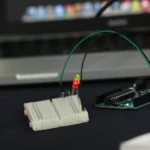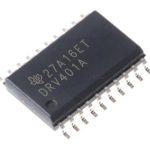
Introduction
Passive Infrared (PIR) sensors are ubiquitous in today’s modern lifestyle, facilitating from motion-activated lights in our homes to security systems in commercial buildings. PIR sensors are significant in enhancing energy efficiency and security and rely on the detection of heat emitted by living beings or objects to trigger an action or response. However, like any technology, bespoke sensors also have certain limitations. One such limitation is the dependence of Thermal Metal Oxide Semiconductors (TMOS) on PIR sensors. This article uncovers the realms of PIR sensor technology and the limitations of TMOS-based PIR sensors, focusing on why it’s essential to be aware of them.
A Brief Overview of PIR Sensors
PIR sensors are crucial devices designed to detect infrared (IR) radiation emitted by objects or living beings in their field of view. They consist of two main components: a pyroelectric sensor and a Fresnel lens. The pyroelectric sensor, made of a crystalline material, generates an electrical charge when it detects a change in the infrared radiation pattern. This charge is then converted into a voltage signal–indicating the presence of motion. For instance, when a warm object, such as a person or an animal, moves within the sensor’s detection range, it triggers a change in the pattern of infrared radiation falling on the sensor elements. This change generates an electrical signal–triggering the sensor to activate.
Uncovering the Role of TMOS in PIR Sensors
TMOS (Thermal Metal Oxide Semiconductor) is a type of material used in PIR sensors to enhance their sensitivity to temperature changes. TMOS-based sensors are highly effective in detecting small temperature variations, making them ideal for motion detection applications. These sensors are widely used in both residential and commercial settings due to their robust reliability and low cost.
Limitations of TMOS-Based PIR Sensors
While TMOS-based PIR sensors offer many advantages, they also come with some limitations that users should be aware of:
Limited Detection Range
One of the primary limitations of TMOS-based PIR sensor is their limited detection range. These sensors are designed to detect temperature changes within a specific range–typically up to 5-10 meters. Beyond this range, their sensitivity diminishes significantly, making them less effective for applications requiring long-range motion detection.
Susceptibility to Environmental Factors
TMOS-based PIR sensors are sensitive to environmental factors like temperature fluctuations and airflow. Rapid changes in temperature, such as those caused by HVAC systems or drafts, can trigger false alarms or cause the sensor to miss actual motion events. This susceptibility to environmental factors can be a significant drawback in some applications, especially in outdoor settings.
Limited Detection Angle
Another limitation of TMOS-based PIR sensor is their limited detection angle. These sensors typically have a narrow field of view, typically around 90 degrees. While this may be sufficient for many indoor applications, it may not cover a wider area for some outdoor security or perimeter monitoring needs.
Inability to Distinguish Between Objects
PIR sensors, including TMOS-based sensors, do not have the capability to discriminate between different object types–leading to false alarms in certain situations. They detect any temperature change within their detection range–whether a human, an animal, or an inanimate object causes it.
Slow Response Time
TMOS-based PIR sensors have a relatively slow response time compared to some other motion detection technologies, such as microwave or ultrasonic sensor. This slower response time can result in a delay in triggering the desired action, which does not suit applications that require an immediate response, such as security systems.
Mitigating TMOS-Based PIR Sensor Limitations: The Future of Motion Detection
While TMOS-based PIR sensors have their limitations, they can still be highly effective when used in suitable applications and with proper considerations. Some of the crucial strategies to overcome the limitations of TMOS-based PIR sensors include:
Fusion with Other Sensor Types
To enhance the accuracy and reliability of motion detection, consider combining TMOS-based PIR sensor with other sensor types, such as ultrasonic or microwave sensors. This can help compensate for the limited detection range and object discrimination capabilities of PIR sensors.
Proper Placement and Calibration
Careful placement and calibration of TMOS-based PIR sensors can minimise false alarms and maximise their effectiveness. Avoid placing sensors near heat sources or vents and adjust their sensitivity settings as needed to suit the specific environment.
Regular Maintenance
Regular maintenance of PIR sensor systems is essential to ensure they continue to perform optimally. Cleaning the sensor’s lens and checking for obstructions can help prevent false alarms caused by dust or debris buildup.
Bottom Lines
TMOS technology has dramatically improved the sensitivity and effectiveness of PIR sensors in detecting motion and temperature changes. However, it’s essential to be aware of the limitations associated with TMOS-based PIR sensors and take appropriate measures to mitigate them. Exploring alternative sensor technologies may be necessary for specific applications where the limitations of TMOS-based sensors pose significant challenges.





















